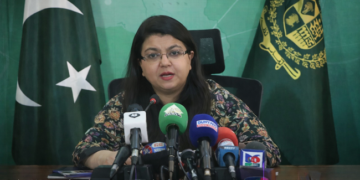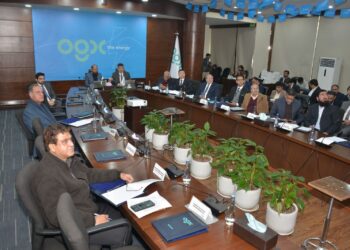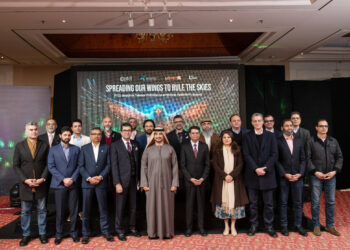Islamabad — In a significant breakthrough for Pakistan’s international trade and diplomatic relations, the United States has announced a 10% reduction in tariffs on Pakistani products, bringing the current tariff rate to 19%. This reduction gives Pakistan the lowest tariff rate among key South Asian economies, including regional competitors like India, Bangladesh, Sri Lanka, and Vietnam, and opens new doors for expanded trade, particularly in textiles and apparel exports.
This latest tariff adjustment, announced via the US Trade Representative’s updated tariff list, signals improved bilateral ties, favorable trade preferences, and a clear recognition of Pakistan’s growing role in global trade, especially amid evolving geopolitical and economic realignments.
Overview: Pakistan Secures Competitive Edge in US Market
According to the new US tariff schedule, Pakistan will now face a 19% duty on its exports to the American market, down from the previous 29%. This contrasts sharply with tariffs imposed on other countries:
- India – 25%
- Bangladesh, Vietnam, Sri Lanka, Taiwan – 20%
- South Africa – 30%
- Switzerland – 39%
- Canada – 35%
- Turkey and Israel – 15%
- UK, Brazil, Falkland Islands – 10%
- Myanmar, Laos – 40%
- Syria – 41%
Pakistan now shares the 19% rate with a group of ASEAN countries, including Indonesia, Malaysia, the Philippines, Thailand, and Cambodia, aligning the country with emerging export-driven economies.
This preferential treatment, while still not tariff-free, provides a competitive edge to Pakistani exporters, especially in the textile and apparel sectors, which form the backbone of the country’s export economy.
Government’s Response: Ministry of Finance Hails US Decision
The Ministry of Finance, in an official statement released Friday, welcomed the new tariff regime and described it as a positive development in US-Pakistan trade relations. The Ministry noted that the move reflects a balanced and forward-looking policy on the part of US trade authorities and creates valuable opportunities for Pakistan’s export sectors to grow.
“This new tariff structure not only places Pakistan ahead of major South Asian countries but also confirms the United States’ acknowledgment of Pakistan’s economic reforms and commitment to global trade standards,” the statement said.
The Ministry confirmed that the reduction followed months of dialogue and engagement with US officials, including technical-level discussions and high-level diplomatic meetings.
Key Stakeholders Involved in Securing Tariff Reduction
The new trade incentives are the outcome of multi-layered diplomatic and policy efforts involving various institutions and individuals. Among the prominent contributors to this milestone are:
- Special Investment Facilitation Council (SIFC): Played a vital role in finalizing trade and investment negotiations with US officials, streamlining inter-agency coordination.
- Field Marshal General Syed Asim Munir (Chief of Army Staff): His diplomatic engagements with US leadership, including a reported meeting with former US President Donald Trump, helped convey Pakistan’s strategic and economic intent on international platforms.
- Prime Minister Shehbaz Sharif: Led a series of diplomatic outreach initiatives with the US, emphasizing mutual economic interests and geopolitical cooperation.
- Foreign Minister Ishaq Dar: Participated in key foreign policy discussions that shaped the broader trade framework and ensured alignment with US economic objectives.
- Finance Minister Muhammad Aurangzeb: Played a frontline role in trade negotiations, participating in high-level meetings with US Treasury and commerce officials, where Pakistan’s reform agenda and export potential were actively promoted.
The tariff reduction is not a coincidence but rather a reflection of Pakistan’s intensified efforts to reposition itself as a stable and investment-friendly market in the global economy.
Strategic Importance: A Boost for Pakistan’s Export-Led Growth
Lower US tariffs are expected to significantly boost Pakistan’s exports, particularly in sectors such as:
- Textiles and garments
- Leather goods
- Sports equipment
- Surgical instruments
- IT and BPO services
- Agricultural products
According to sources in the Ministry of Finance, the US government anticipates a 20% increase in Pakistani exports to the United States as a direct consequence of the tariff reduction. This expectation aligns with Pakistan’s broader economic strategy to reduce its trade deficit, increase foreign exchange reserves, and diversify its export portfolio.
The United States is already one of Pakistan’s largest export destinations, particularly for textile goods, and this development is likely to strengthen Pakistan’s share in the $400+ billion US textile import market.
Textile Sector in Focus: A Major Beneficiary
Pakistan’s textile industry, which accounts for nearly 60% of the country’s total exports, stands to gain significantly from the lower tariff structure. With stiff competition from countries like India, Bangladesh, and Vietnam, the 19% tariff rate gives Pakistani textile manufacturers a critical pricing advantage in the American market.
Textile exporters, through bodies such as the All Pakistan Textile Mills Association (APTMA), have welcomed the move, stating that it will:
- Help regain lost market share in the US
- Make Pakistani textile products more price-competitive
- Increase orders from major US apparel brands
- Encourage investment in value-added production
APTMA Chairman commented, “The US tariff reduction is a game-changer. It will encourage small and medium-sized enterprises to explore the US market with greater confidence.”
Incentives for US Investment in Pakistan
In addition to the tariff reductions on Pakistani exports, the new trade arrangement also includes incentives for American companies seeking to invest in Pakistan. The agreement features tax concessions and simplified regulatory processes, particularly in the mining, energy, and technology sectors.
This move is expected to:
- Attract greenfield investment in underdeveloped areas
- Facilitate joint ventures with Pakistani firms
- Promote technology transfer and skill development
- Support industrial modernization and value chain enhancement
The Ministry of Commerce, in coordination with SIFC, is working on a roadmap to match potential US investors with projects in key sectors, especially those identified under Pakistan’s Vision 2030 development framework.
Global Trade Landscape: Pakistan’s Comparative Advantage
In the context of global trade tensions, shifting supply chains, and evolving US trade policy post-COVID-19, Pakistan is seen as a geostrategically positioned country with low labor costs, a growing tech ecosystem, and improving regulatory transparency.
The 19% tariff rate gives Pakistan a relative advantage compared to:
- India, where ongoing US-China tensions and regulatory hurdles have impacted export dynamics
- Bangladesh, which, despite being a textile powerhouse, faces similar 20% US tariffs
- Vietnam and Taiwan, whose manufacturing-led growth has plateaued due to rising wages
- African and Latin American nations, which face significantly higher duties
This comparative edge may lead US importers and brands to reconsider sourcing strategies in favor of reliable, cost-effective, and diversified suppliers like Pakistan.
Challenges and the Road Ahead
While the tariff reduction is a promising development, experts caution that policy continuity, infrastructure modernization, and regulatory support will be essential to capitalize on this opportunity. Key challenges include:
- Logistical inefficiencies at ports
- Energy shortages affecting industrial output
- Currency volatility impacting export pricing
- Need for improved compliance with international quality standards
To address these issues, the government has launched multiple reforms, including:
- Export facilitation zones (EFZs)
- Digital customs clearance systems
- Ease of doing business improvements
- Skills development for export-oriented sectors
Conclusion: A Strategic Breakthrough for Pakistan’s Trade Aspirations
The 10% reduction in US tariffs on Pakistani products, leading to a favorable 19% rate, is a significant diplomatic and economic achievement. It not only strengthens Pakistan’s trade relations with the United States but also elevates its status as a preferred trade partner in South Asia.
With the right policies, infrastructure, and industry readiness, Pakistan can leverage this opportunity to expand exports, attract foreign investment, and move closer to its goal of becoming a regional trade and manufacturing hub. The move reaffirms the country’s strategic importance and the global community’s renewed interest in its economic revival.

























